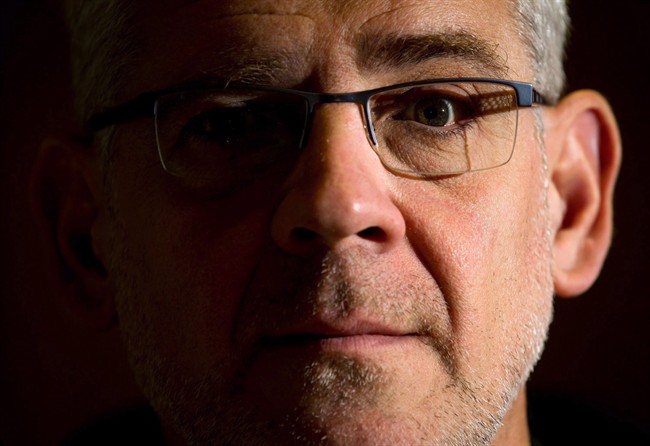TORONTO – Make sure 90 per cent of people infected with HIV are tested, get 90 per cent of that group on regular treatment, and have 90 per cent stay on the therapy to keep their viral loads undetectable.

It’s an ambitious strategy – dubbed the 90-90-90 – but it’s incredibly promising: The made-in-Canada plan has been formally adopted by the United Nations as the global authority’s strategy in its fight against HIV/AIDS.
Countries around the world will be following these targets, put together by a Vancouver doctor who’s the chief architect.
“The AIDS epidemic as we know it will be on its knees. We would turn a raging global pandemic into a sporadic endemic disease. There may be cases emerging here or there but for the most part, the notion of a war against AIDS and the devastation of a whole generation of HIV/AIDS victims would be a thing of the past,” Dr. Julio Montaner, the creator of the 90-90-90 plan, said.
He’s also director of the B.C. Centre for Excellence in HIV/AIDS and has spent decades studying the disease.
“We turned what was a crazy idea into a policy,” he told Global News.
READ MORE: A made-in-Canada health strategy is making waves worldwide – just not in Canada
It started in his stomping grounds in B.C.
- As Canada’s tax deadline nears, what happens if you don’t file your return?
- Video shows Ontario police sharing Trudeau’s location with protester, investigation launched
- Planning a summer trip to Quebec’s Îles-de-la-Madeleine? You’ll have to pay up.
- Investing tax refunds is low priority for Canadians amid high cost of living: poll
British Columbia has become a global success story in combatting HIV/AIDS thanks to Montaner, who’s become internationally recognized for his HIV treatments — namely, highly active antiretroviral therapy, or HAART.
It’s a cocktail of three drugs (taken daily) first implemented in 1996 to stop HIV from progressing into AIDS, to extend life expectancy and to reduce HIV-related deaths.
Under Montaner’s vision, B.C. became the “testing ground” for treatment as prevention — meaning that the treatment will help prevent the spread of the virus.
Starting in 1996, provincial health officials made B.C. the foundation for this treatment, testing the public and rolling out these drugs free of charge.
It worked: For every 100 patients using HAART, scientists recorded a three per cent decrease in HIV diagnoses in B.C.
New cases also took a steep decline — turns out, the cocktail also lowers the viral load of those who are HIV positive to the point where they are less likely to transmit the virus to their partners.
READ MORE: HIV 30 years later: Experts mark milestones in treatment advances
Last June, Vancouver’s St. Paul’s Hospital took a step that not long ago would’ve been unthinkable: It closed its HIV/AIDS ward. It wasn’t getting new patients.
The therapy’s been adopted in China, France, Brazil, Spain, Panama and Sierra Leone. Deals are in the works with Australia, Mexico and South Africa. The World Health Organization has even endorsed it.
Montaner says that China and parts of Africa that have adopted his strategy have already seen declines in the disease. And he’s glad: critics often suggested that B.C.’s success story wouldn’t necessarily translate elsewhere. The international data is validating the findings out of Canada.
Now, UNAIDS is taking on Montaner’s 90-90-90 plan, not just as an endorsement but in implementation.
“To actually make it the cornerstone of the global fight against HIV/AIDS is huge,” Montaner said. Teachers can recommend books to their students, but in this case, the UN is making the 90-90-90 strategy mandatory reading, he explained in an analogy.
“There’s a difference between endorsement and crystallizing treatment as prevention as the therapy for the world.”
READ MORE: HIV/AIDS ward closes at St. Paul’s Hospital due to decline in disease
Now, UN officials could even touch base with country officials to ask how far along they are in reaching their 90-90-90 targets.
What that means, according to the plan’s outline, is:
- Ensuring 90 per cent of the infected are tested and diagnosed; currently that number is about 55 per cent;
- Getting 90 per cent of those who are diagnosed on treatment with antiretroviral drugs; that number is currently 37 per cent;
- Aiming to have at least 90 per cent of those infected attain an undetectable level of virus in their bodies (essentially a functional cure); currently those rates range from 40 to 80 per cent in various countries.
World leaders, secretaries of state and other dignitaries helped to celebrate the plan with Montaner last week in New York City. But keep in mind, while treatment as prevention is followed in many countries, it hasn’t been embraced nationally by Canada.
No other province in Canada covers 100 per cent of the HAART medication aside from B.C.
“This is probably the biggest contribution to public health from Canada since insulin, this is not being celebrated properly,” Montaner said.
READ MORE: HIV isn’t easily transmitted by sex, Canadian doctors say
In June, the federal government told Global News that it’s “closely monitoring” HIV/AIDS developments internationally but decisions on treatment and the delivery of health care services are a provincial issue.
(It also noted it spent $86.7 million on research, diagnosis and treatment in 2014-15 alone.)
In the meantime, Montaner’s elated at the international response to his life’s work. He called the UN’s formal adoption of 90-90-90 the “climax” of decades of research.
“I have no words to explain to you how I feel, that there is a chance to make this epidemic virtually disappear,” Montaner told Global News.
“This is a made-in-Canada strategy that has potential to change the world forever. I’m greatly indebted to all of my patients, colleagues and collaborators,” he said.
carmen.chai@globalnews.ca
Follow @Carmen_Chai




Comments